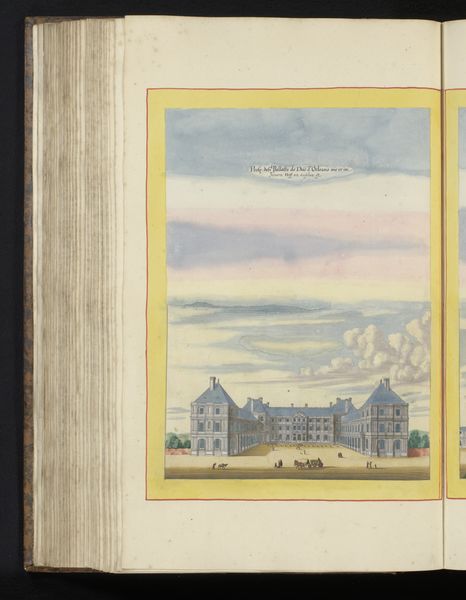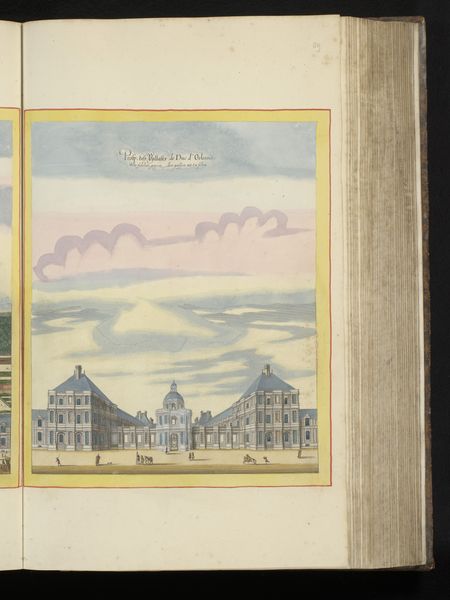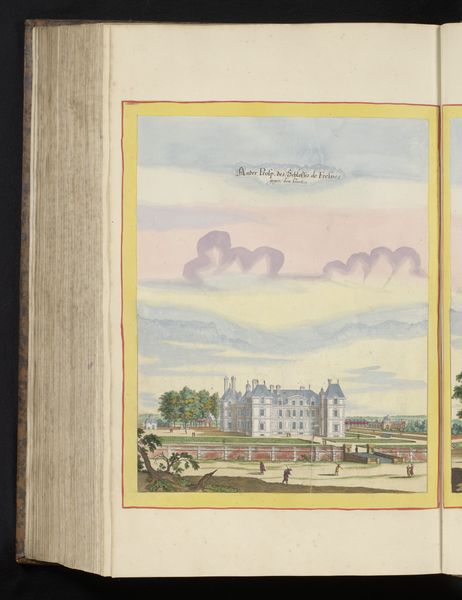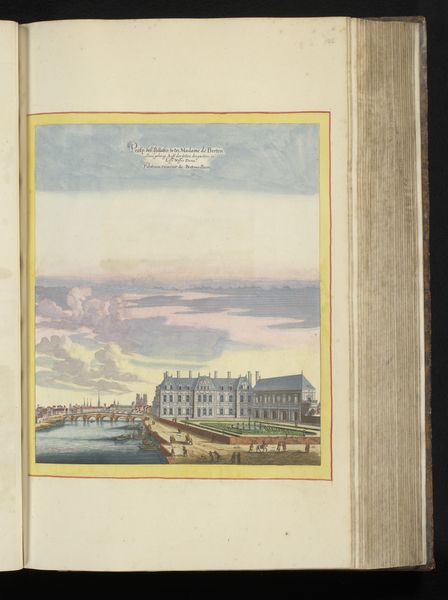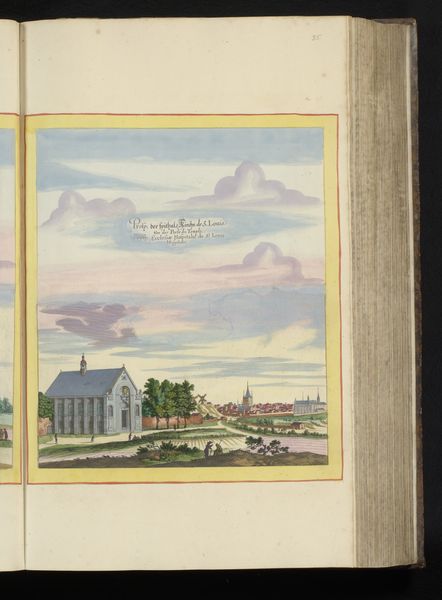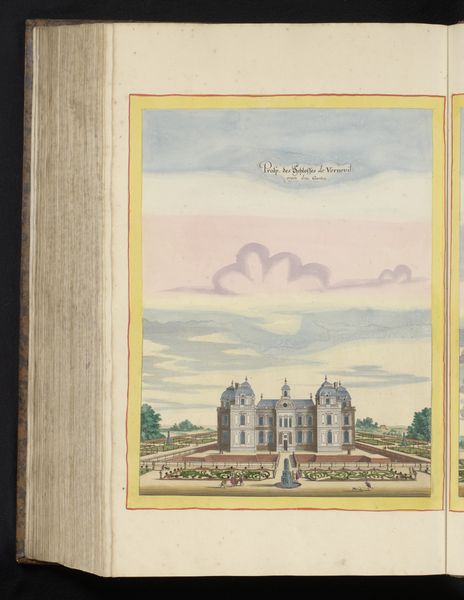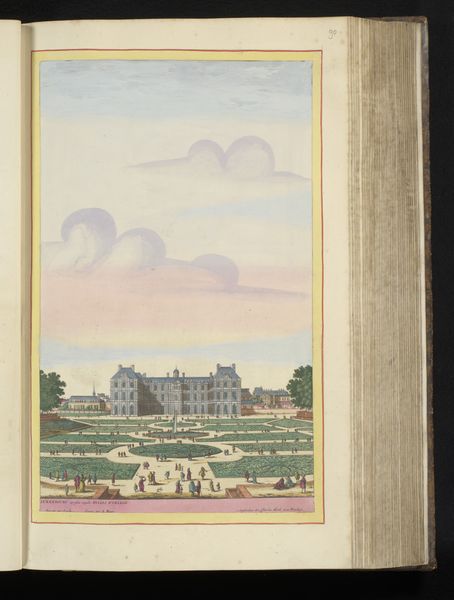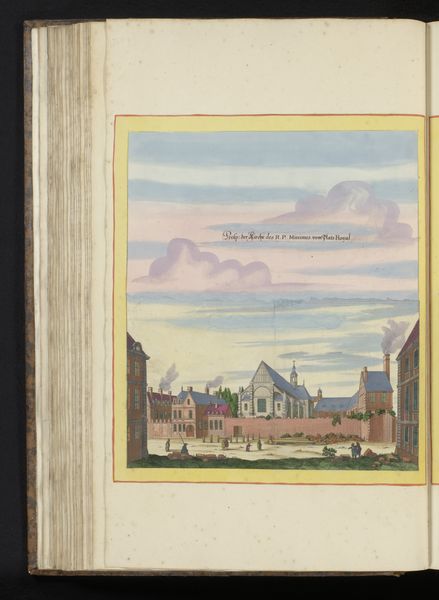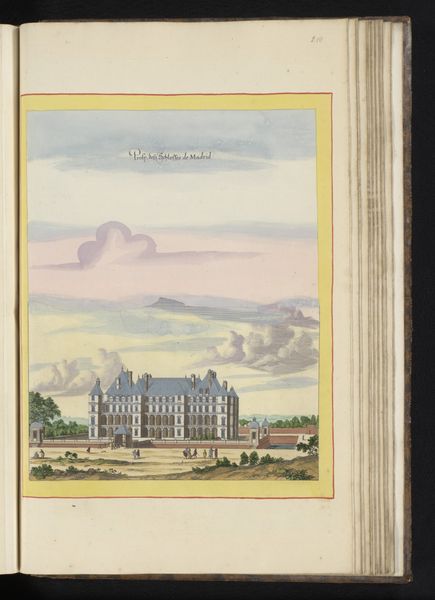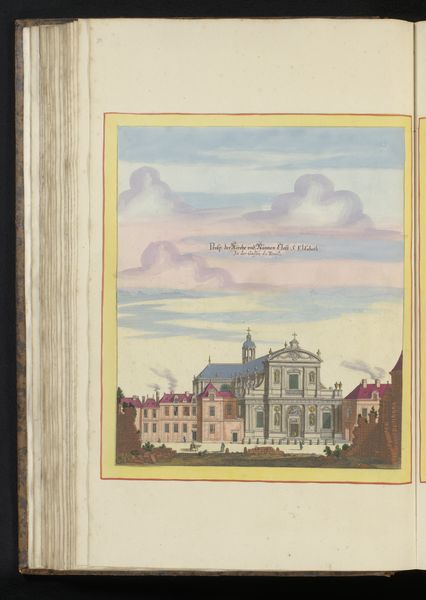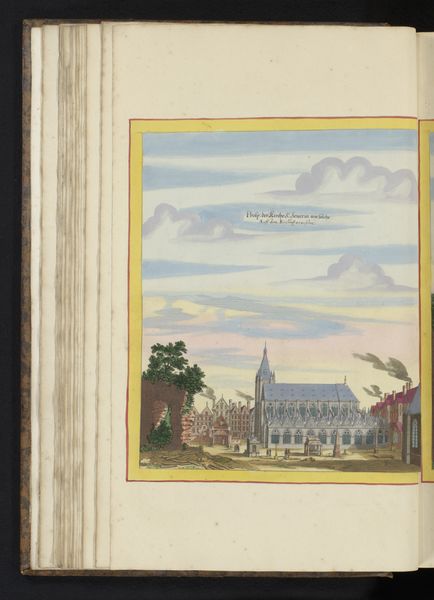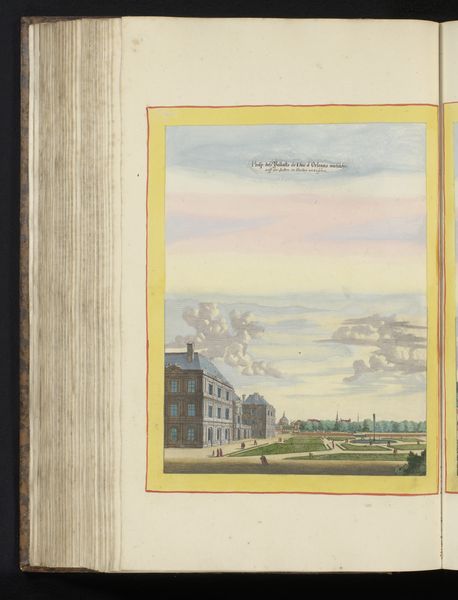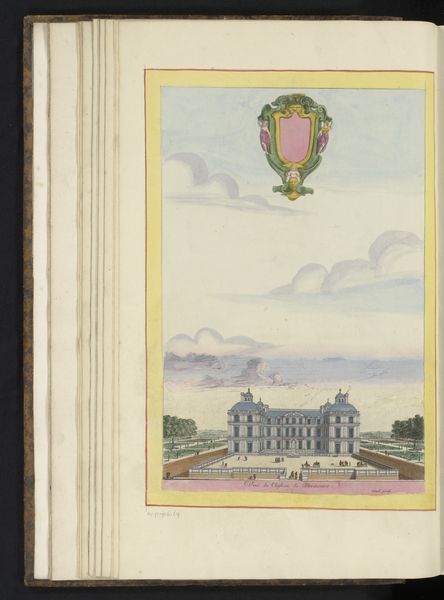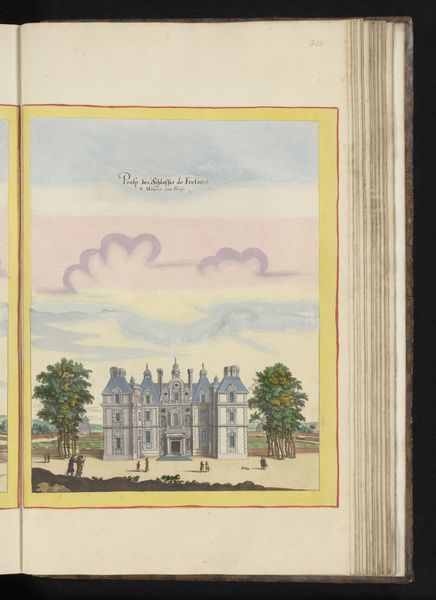
drawing, paper, watercolor
#
drawing
#
baroque
#
landscape
#
paper
#
watercolor
#
coloured pencil
#
cityscape
#
watercolor
Dimensions: height 357 mm, width 256 mm, height 536 mm, width 318 mm
Copyright: Rijks Museum: Open Domain
Curator: Before us we have Matthäus Merian the Younger’s “Gezicht op Palais du Luxembourg vanaf de tuinen”, a cityscape rendered around 1655 in delicate watercolor on paper. It’s currently held at the Rijksmuseum. Editor: The pastel sky steals my attention right away; it feels strangely melancholic for what I'd expect from a Baroque-era depiction of a royal residence. It reminds me of a faded photograph. Curator: That softened effect certainly contrasts with the Palace itself, doesn't it? Consider the image-making surrounding powerful figures in the 17th century, and how structures came to represent their power, and indeed, their eternal place in history. Editor: Absolutely. And, the palace appears almost stage-like in the way the garden extends as a visual foreground—a stage upon which power performs, really. Who exactly was being represented in this carefully constructed world, and whose presence might have been erased? It's essential to understand these representations within their political context. Curator: I agree, and the perspective from the garden, the choice of standing among those manicured beds to gaze up at this center of power, that positions us as viewers within a specific cultural framework. The image serves to remind the contemporary viewer about the continuous construction of authority through architecture and the nature controlled. Editor: Precisely! Even the clouds take on this sense of forced, artificial order as the composition flattens the clouds into forms that become an architectural crown that echoes and extends the palace's structured appearance, giving an eternal feeling of power. And how are these "symbols" of control received across varied identities? Curator: I can't help but wonder, looking at the people depicted walking in the gardens, did Merian consciously infuse these figures with symbolism about humanity and progress, maybe influenced by growing discussions concerning nature versus nurture? These subtle signals of modernity can't be overlooked. Editor: That is what’s powerful about visuality. While an imposing building may speak for a society or empire’s dominance and influence, let’s not lose sight of how it plays with cultural forces and individual experiences in terms of social, political, and identity complexities. The symbolic language speaks volumes, depending on who is watching. Curator: An observation well said. There are many entry points to unpack here in this watercolor; I find that, time and again, revisiting the imagery brings new insights into its rich context. Editor: I leave this encounter feeling urged to deconstruct every aspect of the visible reality represented, considering those perspectives, and what are hidden within. Thank you.
Comments
No comments
Be the first to comment and join the conversation on the ultimate creative platform.
